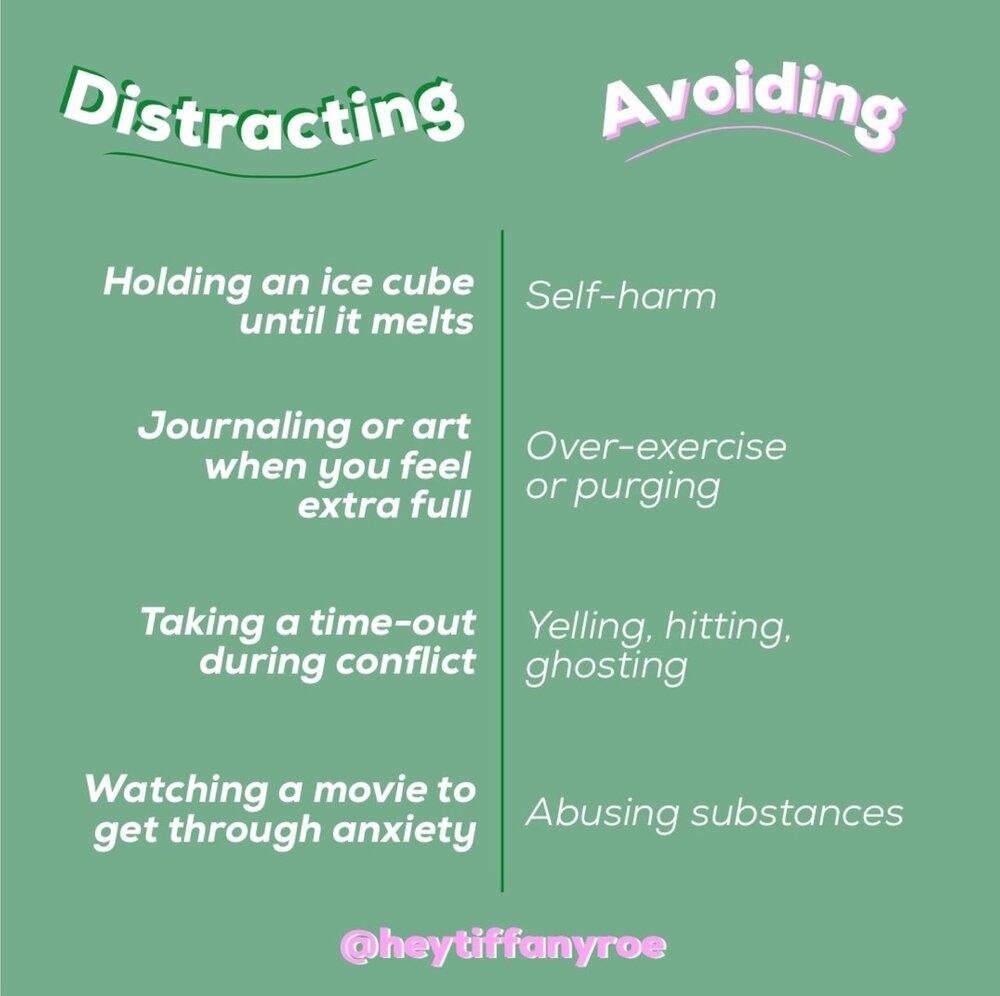
Therapy thoughts: Sometimes we need to distract ourselves when our emotions are intense.
If I’m a 10/10 on my anger scale, it’s not the time for me to have a conversation or make any life decisions! It’s better for me to take a bath, breathe, write, take a nap, and utilize conflict resolution skills after I’ve de-escalated.
Distraction is not the same thing as avoidance. Conscious & intentional distraction is a distress tolerance skill that we use can mindfully and skillfully so we don’t explode, make emotion based impulsive choices, or react! It can be proactive and help us engage positive cognitive & behavioral skills. It can help us deescalate and cope effectively.
Avoidance can be used to numb, suppress, or deny that we are having an intense emotional experience. I think of avoidance as an attempt to shove away our experience and never go back. We don’t want to deal with it. We may engage in maladaptive, harmful, and self-defeating means to avoid.
Distraction is a skill we implement to *temporarily* take a break, so we are better able to manage and handle our emotions. If you feel overwhelmed by your emotions, distraction skills may be helpful in regulating your emotions when you’re higher on your scale. It’s part of the feel deal heal plan.
Note: Is ghosting always avoidance? Not necessarily, could be a safe boundary. Is avoidance a moral issue that is “bad?” No. Is distraction guaranteed to work? No. Can it easily become avoidance? Yes. I’m introducing complex tools I teach in therapy that really need to be individualized and practiced. I provide general ideas here but there are always exceptions. Make sure to talk with your therapist about your personalized distraction vs avoidance tools.
Examples of Distractions:
Holding an ice cube until it melts
Journaling or art when you feel extra full
Taking a time-out during conflict
Watching a movie to get through anxiety
Examples of Avoidance:
Self-Harm
Over-Exercise or Purging
Yelling, Hitting, Ghosting
Abusing Substances
Therapy and tacos for all,



